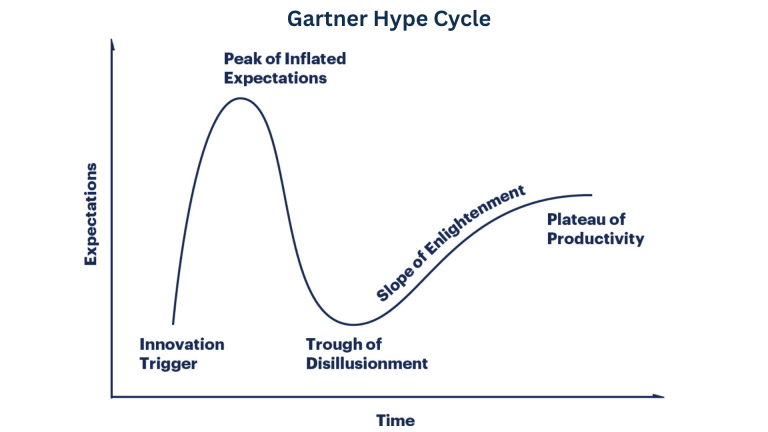AI-Powered Brand Monitoring & Social Listening: A Strategic Implementation Guide
Conversations about your brand happen constantly across the internet: social media posts, forum discussions, YouTube comments, blog mentions, Reddit threads, review sites. These conversations matter. They reveal customer sentiment, surface product issues, identify advocates, expose competitive threats, and provide opportunities for engagement. Yet most organizations struggle to track them effectively.
Manual monitoring is time-consuming and incomplete. Checking Twitter (X), Reddit, YouTube, TikTok, forums, and blogs daily consumes hours while still missing mentions. By the time you discover important conversations, they’ve aged… the frustrated customer has already churned, the product issue has spread, or the engagement opportunity has passed.
Traditional social listening tools help but have limitations. Many focus primarily on major platforms while missing niche forums or emerging channels. Keyword-based monitoring generates noise, irrelevant mentions drowning out important discussions. Basic sentiment analysis misses nuance, context, and sarcasm. Expensive enterprise tools deliver comprehensive coverage but cost more than small businesses can justify.
The business cost of inadequate brand monitoring is measurable. Customer issues that could have been resolved early escalate into public complaints. Product problems go undetected until they affect many customers. Competitive threats emerge without notice. Positive brand advocates go unrecognized and unengaged. Potential customers ask questions in public forums that receive no response, leading them to competitors.
AI-powered brand monitoring systems can address this comprehensively by tracking mentions across diverse platforms, understanding context and sentiment accurately, categorizing discussions by type and urgency, identifying trends and themes, and alerting teams to conversations requiring response. But this use case requires careful implementation to ensure it delivers actionable intelligence rather than just creating another stream of overwhelming information.
Is This Use Case Right for Your Organization?
Identifying the Right Business Problems
This use case makes strategic sense when your organization faces specific, measurable brand monitoring challenges:
Brand mentions are growing beyond manual tracking capacity. If you’re spending 5-10+ hours weekly checking social platforms, forums, and review sites, yet still regularly discover important mentions days or weeks late, you’ve outgrown manual monitoring. Calculate the cost: an hour daily checking platforms is 250+ hours annually, expensive time that doesn’t scale as your brand grows.
Slow response to brand mentions creates business problems. When customers post questions, complaints, or issues publicly and receive no response, they form negative impressions and often share those impressions widely. If you can measure instances where delayed responses led to escalated complaints, lost customers, or reputation damage, faster monitoring delivers clear value.
Important conversations happen across too many platforms. Perhaps your customers are active on Reddit, discuss products in Discord servers, post reviews on YouTube, and share experiences on TikTok. If you’re only monitoring 2-3 platforms while missing conversations elsewhere, you’re operating with incomplete intelligence about brand perception.
You lack visibility into customer sentiment trends. Beyond individual mentions, aggregate sentiment matters: Is overall perception improving or declining? Are specific product issues generating recurring complaints? Has a competitor action shifted market conversation? If you can’t answer these questions with confidence, you’re missing strategic intelligence.
Product feedback is scattered and unsynthesized. Customers share feature requests, report bugs, and suggest improvements across many channels. If this feedback doesn’t systematically reach product teams, or if patterns across multiple mentions go unrecognized, you’re missing opportunities to improve based on actual user needs.
Competitive intelligence gaps create blind spots. Customers often discuss your brand in the context of comparing alternatives. These comparative discussions reveal your competitive positioning, strengths, and weaknesses. If you’re not tracking these conversations, you miss important market intelligence.
When This Use Case Doesn’t Fit
Be realistic about when this approach won’t deliver value:
- Your brand has minimal online presence. If people rarely discuss your brand online because you’re very small, very niche, or operate primarily offline, comprehensive monitoring is premature. Focus on building brand awareness first.
- You operate in highly private/confidential contexts. Some B2B businesses or professional services have customers who don’t publicly discuss vendors. If conversations about your brand happen privately rather than publicly, monitoring tools can’t help.
- Response isn’t relevant to your business model. Some businesses deliberately don’t engage in social conversations; they focus on other channels. If public engagement isn’t part of your strategy and monitoring wouldn’t inform product or marketing decisions, don’t invest in it.
- You lack capacity to act on insights. If discovering mentions won’t lead to responses, product improvements, or strategic adjustments because you lack the capacity or organizational commitment to act, monitoring just creates noise.
- Privacy or ethical concerns prevent monitoring. Some industries or contexts make public monitoring inappropriate or creepy. Consider whether tracking and responding to public mentions aligns with your values and customer expectations.
Measuring the Opportunity
Quantify the business case before proceeding:
- Time savings: How many hours weekly do team members spend manually checking for brand mentions? What’s the loaded cost? What would they do with freed time: engage more deeply with customers, create content, analyze feedback?
- Response speed value: How much would faster response to customer issues, questions, or complaints be worth? Faster engagement often prevents escalation, recovers at-risk customers, and creates positive impressions.
- Sentiment improvement: If you could identify and address issues earlier, how would overall brand sentiment improve? Better sentiment correlates with retention, referrals, and easier acquisition.
- Product feedback value: What’s it worth to systematically capture and synthesize feature requests and bug reports? Better product direction informed by actual customer needs delivers substantial long-term value.
- Competitive intelligence: How valuable is understanding how customers compare you to competitors, what they value, and where they see gaps? This intelligence informs positioning, messaging, and product strategy.
- Crisis prevention: What would it be worth to catch potential PR issues early before they escalate? One prevented crisis can justify years of monitoring investment.
A compelling business case shows ROI within 12-18 months and demonstrates connection to customer retention, reputation management, or product improvement rather than just operational efficiency.
Designing an Effective Pilot
Scope Selection
Choose a pilot scope that proves value while remaining manageable:
Select 2-4 key platforms where your audience is active. Don’t try to monitor the entire internet initially. Pick platforms where your brand gets discussed meaningfully:
- Reddit (specific subreddits relevant to your industry)
- X / Twitter (direct mentions and relevant hashtags)
- YouTube (video content and comments about your category)
- TikTok (if your audience is active there)
- Industry-specific forums or communities
- Review sites relevant to your business (G2, Trustpilot, Yelp)
Define what constitutes a “mention” worth tracking. Be specific about scope:
- Direct brand name mentions
- Product names or key features
- Misspellings or variations of your brand
- Discussions of your product category without naming you (opportunity to engage)
- Competitor mentions in contexts where your brand is relevant
- Keywords indicating problems you solve
Categorize mentions by type and urgency. Establish classification:
Urgent (require rapid response):
- Direct customer complaints or support issues
- Negative reviews or crisis-indicating conversations
- Viral negative content
- Direct questions needing answers
Important (require timely response):
- Product feedback or feature requests
- Positive mentions worth engaging
- Competitive comparisons
- Community questions you could answer
Informational (no response needed, but valuable to track):
- Neutral mentions
- Sentiment trends
- Competitor activity
- Market conversation themes
Establish current baseline. Before implementing anything, document: How often do you currently check for mentions? How many mentions do you find? How long between mention and discovery? What percentage of mentions do you estimate you miss? How quickly do you typically respond?
Pilot Structure
A typical pilot runs 6-10 weeks with clear phases:
Weeks 1-2: Setup and Calibration
- Configure monitoring for selected platforms and keywords
- Test detection accuracy (catching relevant mentions, filtering noise)
- Establish sentiment analysis baseline accuracy
- Set up categorization and alerting rules
- Create notification workflows (who gets alerted for what?)
- Train team on monitoring system and response protocols
Weeks 3-8: Active Monitoring
- Run monitoring continuously across pilot platforms
- Review captured mentions daily
- Respond to mentions according to priority
- Track response times and outcomes
- Monitor false positives (irrelevant mentions captured) and false negatives (missed mentions)
- Refine filters and categorization based on learnings
- Document patterns and trends observed
Weeks 9-10: Assessment and Analysis
- Compare mention discovery volume to baseline
- Measure response time improvements
- Analyze sentiment trends during pilot period
- Calculate time savings from automated monitoring
- Gather team feedback on system usefulness
- Identify missed mentions or platform gaps
- Make go/no-go decision based on evidence
Success Criteria
Define clear metrics before starting:
Coverage completeness: System should capture 90%+ of brand mentions on pilot platforms. Compare against manual checks to validate.
Response time improvement: Time from mention to awareness should decrease from days to hours or minutes. Aim for 80%+ of urgent mentions detected within 1 hour.
Signal-to-noise ratio: At least 70% of flagged mentions should be genuinely relevant. Too many false positives waste time; too much filtering misses important mentions.
Time savings: Manual monitoring time should decrease by 60-80% while coverage increases. If you currently spend 8 hours weekly on manual checks, target 1-2 hours reviewing automated alerts.
Sentiment accuracy: Sentiment classification should match human judgment 85%+ of the time. Misclassifying negative mentions as positive (or vice versa) undermines trust in the system.
Actionable intelligence: System should surface insights that inform decisions: product improvements, marketing messages, support process changes, or competitive positioning adjustments.
The pilot succeeds when it demonstrates significantly better coverage with dramatically reduced manual effort, while delivering actionable intelligence that improves business outcomes.
Scaling Beyond the Pilot
Phased Expansion
Scale deliberately based on pilot learnings:
Phase 1: Expand to additional platforms with similar characteristics. If you piloted with Reddit and Twitter, add Facebook Groups, LinkedIn, or similar text-based platforms. The monitoring patterns transfer naturally.
Phase 2: Add more complex content types like video platforms (YouTube, TikTok) where you need to process both video content and comments, or podcasts where audio transcription is required. These demand different technical capabilities.
Phase 3: Deepen analysis beyond detection. Move from simply finding mentions to:
- Cross-platform trend analysis (same issue discussed in multiple places)
- Sentiment evolution over time
- Comparison of your brand sentiment to competitors
- Predictive signals (early warning indicators of problems)
- Influencer and advocate identification
- Community conversation mapping (understanding discussion patterns)
Phase 4: Integrate with other systems. Connect brand monitoring to:
- Customer support platforms (create tickets from mentions)
- CRM systems (enrich customer profiles with social activity)
- Product management tools (flow feedback to product teams)
- Marketing platforms (identify engagement opportunities)
- Business intelligence systems (brand health dashboards)
Technical Requirements for Scale
Moving from pilot to comprehensive monitoring demands technical maturity:
Multi-platform data collection. At scale, you need reliable data access:
- API integrations for platforms that provide them
- Web scraping for platforms without APIs (where legally and ethically appropriate)
- Real-time monitoring for time-sensitive mentions
- Historical backfill to understand trends
- Handling rate limits and access restrictions
Content processing at volume. As monitoring expands, process efficiently:
- Text extraction from various formats
- Video transcription and analysis
- Image and meme understanding (visual brand mentions)
- Language detection and translation for global brands
- Deduplication (same mention shared across platforms)
Intelligent classification. Sophisticated categorization improves as volume grows:
- Sentiment analysis with context understanding (sarcasm, nuance)
- Topic modeling (automatically identifying discussion themes)
- Urgency scoring (which mentions need immediate attention)
- Intent classification (support issue vs. question vs. feedback)
- Entity recognition (distinguishing your brand from similar names)
Alerting and workflow. At scale, route mentions appropriately:
- Smart notifications (right person, right channel, right urgency)
- Escalation rules for crisis situations
- Workflow integration (automatically create support tickets)
- Response tracking (ensuring mentions get addressed)
- Team collaboration on complex situations
Performance and reliability. Production systems require:
- Consistent uptime for continuous monitoring
- Low latency for time-sensitive alerts
- Scalable infrastructure as mention volume grows
- Data retention and historical analysis capabilities
Organizational Requirements
Technology enables monitoring, but people make it valuable:
Define response protocols. When mentions are discovered, what happens?
- Who responds to different mention types?
- What’s the tone and approach for responses?
- When should responses be public vs. private DMs?
- What authority do responders have?
- When should mentions escalate to leadership?
Create content and community guidelines. Establish standards:
- Brand voice in social responses
- What topics or conversations to engage vs. avoid
- How to handle hostile or unfair criticism
- Transparency about brand representation
- Privacy boundaries (not being invasive)
Build cross-functional workflows. Mentions inform multiple teams:
- Customer support addresses issues
- Product receives feedback and feature requests
- Marketing identifies advocates and engagement opportunities
- PR handles reputation and crisis situations
- Sales learns about prospects researching solutions
Develop crisis protocols. Prepare for negative situations:
- What constitutes a crisis requiring immediate escalation?
- Who leads crisis response?
- How quickly must the organization respond?
- What communication approval processes exist?
- How do you prevent crisis escalation?
Compliance, Privacy, and Ethical Considerations
Public Information and Privacy
Brand monitoring raises important considerations even when tracking public information:
Public vs. private distinction. Monitor only genuinely public information:
- Public social media posts
- Public forum discussions
- Public review sites
- Published blog content
- Public video content
Never attempt to access:
- Private accounts or groups
- Direct messages
- Password-protected content
- Content shared with limited audiences
Respecting context. Some public information feels private in context:
- Personal social media accounts discussing brands casually
- Support groups where brand comes up incidentally
- Private community spaces (even if technically accessible)
Consider whether monitoring and responding respects community norms and user expectations.
Data handling and retention. Even for public mentions:
- Store only what’s necessary for business purposes
- Implement reasonable retention limits
- Protect stored data appropriately
- Allow users to request deletion where reasonable
- Comply with regulations like GDPR if applicable
Ethical Engagement Practices
Beyond legal compliance, maintain ethical standards:
Transparency about brand representation. When engaging in conversations:
- Clearly identify yourself as representing the brand
- Don’t pretend to be a neutral third party
- Disclose commercial interests
- Avoid astroturfing or fake grassroots support
Respecting community norms. Different platforms have different cultures:
- Understand each platform’s engagement expectations
- Don’t spam or over-promote
- Add value to conversations, don’t just market
- Respect community rules and moderator guidance
Appropriate response boundaries. Some mentions shouldn’t receive responses:
- Private conversations where brand engagement would feel invasive
- Casual mentions where response seems excessive or creepy
- Negative mentions where engagement would escalate rather than resolve
- Contexts where brand presence is inappropriate
Avoiding manipulation. Use monitoring to serve customers, not exploit them:
- Don’t use monitoring to identify and target vulnerable individuals
- Don’t create artificial controversy to generate engagement
- Don’t suppress legitimate criticism through flooding or intimidation
- Don’t use personal information from social profiles inappropriately
Crisis Management Considerations
Brand monitoring often reveals problems requiring careful handling:
Rapid assessment of severity. When negative mentions appear:
- Distinguish genuine issues from minor complaints
- Identify viral potential (is this spreading?)
- Assess reputational risk
- Determine appropriate response level
Measured response approaches. Don’t over-react:
- Sometimes silence is appropriate (not every criticism needs response)
- Sometimes quiet resolution is better than public engagement
- Sometimes transparency and acknowledgment prevent escalation
- Sometimes legal or PR counsel is necessary before responding
Monitoring, Observability, and Continuous Improvement
System Performance Tracking
Monitor both technical and business metrics:
Coverage metrics:
- Platforms monitored
- Mention volume captured per platform
- Estimated coverage percentage (validated through spot checks)
- Historical mention volume trends
Detection quality:
- False positive rate (irrelevant mentions captured)
- False negative rate (relevant mentions missed, validated through sampling)
- Sentiment classification accuracy
- Categorization accuracy
- Time from mention to detection
Response metrics:
- Time from mention to response
- Response rate by mention type
- Resolution time for issues
- Customer satisfaction with responses
Business Impact Measurement
Connect monitoring to actual business outcomes:
Reputation metrics:
- Overall sentiment trends over time
- Sentiment by platform, product, or topic
- Share of voice versus competitors
- Positive to negative mention ratio
Customer impact:
- Issues resolved through social engagement
- Prevented escalations (problems caught early)
- Customer retention affected by social responses
- Advocacy and positive word-of-mouth generated
Product intelligence:
- Feature requests captured and prioritized
- Bug reports discovered through mentions
- Product improvement themes identified
- Customer needs validated or discovered
Competitive intelligence:
- Competitor mention volume and sentiment
- Comparative discussions revealing positioning
- Competitor product launches or changes detected
- Market trend identification
Efficiency metrics:
- Staff time spent on monitoring (before/after)
- Time freed for proactive engagement versus reactive monitoring
- Cost per mention discovered and addressed
Dashboards for Different Audiences
Create appropriate views for different stakeholders:
Community and support teams need real-time alerts for urgent mentions, daily summaries of conversations, and tools to track responses and resolutions.
Product teams need thematic analysis of feedback, feature request aggregation, bug report summaries, and trends in customer needs or pain points.
Marketing teams need sentiment trends, engagement opportunities, advocate identification, content performance (when brand content is shared), and competitive positioning insights.
Executive leadership needs high-level sentiment trends, crisis alerts, competitive intelligence summaries, and brand health metrics connected to business outcomes.
Continuous Improvement Process
Establish regular cadences for enhancement:
Daily reviews catch immediate issues: potential crises, urgent customer problems, technical monitoring failures, or significant unexpected mention spikes.
Weekly analysis examines patterns:
- Which platforms generate most valuable conversations?
- What topics or issues are trending?
- Where is sentiment shifting?
- Which responses work well versus poorly?
- What mentions are we missing or misclassifying?
Monthly strategic reviews evaluate:
- Is monitoring coverage adequate for current needs?
- Should we add platforms or keywords?
- How is response quality and speed?
- What product or business insights have we gained?
- How does our sentiment trend compare to competitors?
Quarterly assessments examine whether monitoring supports evolving business strategy:
- Do coverage priorities align with current business focus?
- Should response protocols evolve?
- What integration opportunities would increase value?
- How does monitoring ROI compare to investment?
Adaptation Strategies
Brand monitoring needs evolve continuously:
Platform evolution. New platforms emerge, existing platforms change:
- Monitor where your audience is going (new social networks, emerging communities)
- Adjust monitoring as platform algorithms or APIs change
- Retire or reduce focus on declining platforms
- Adapt to new content formats (Stories, Reels, Spaces)
Brand growth and change. As your brand evolves:
- Expand monitoring as brand awareness grows
- Add product lines or features to monitoring scope
- Adjust keyword tracking as messaging evolves
- Monitor new geographic markets or customer segments
Learning from patterns. Use monitoring data to improve:
- Identify recurring issues and address root causes
- Recognize successful response patterns and codify them
- Spot gaps where customers ask questions your content should answer
- Detect competitive vulnerabilities to emphasize in positioning
Competitive dynamics. As competitors change tactics:
- Monitor how competitors engage their communities
- Track competitive product announcements and responses
- Understand shifting customer priorities through comparative mentions
- Adjust your engagement and messaging accordingly
Connecting to Your AI Strategy
This use case delivers maximum value when integrated with your broader AI strategy:
It should address documented strategic priorities. Perhaps brand reputation is strategic and monitoring enables protection and improvement. Or customer-centricity is a pillar and social listening keeps you connected to customer voice. The use case should solve strategic problems.
It builds organizational capability for customer intelligence. Your first brand monitoring implementation teaches how to synthesize customer signals from unstructured sources, understand sentiment and context, identify patterns across conversations, and convert insights into action. These capabilities extend to other customer intelligence applications.
It creates a customer voice foundation. Once you’re systematically capturing what customers say publicly, you can build additional capabilities: voice-of-customer analysis informing product roadmaps, customer sentiment prediction, advocate relationship programs, or competitive intelligence synthesis.
It demonstrates AI’s value in market awareness. Successful brand monitoring shows that AI can keep your organization connected to customer conversation at scale, building confidence in AI’s ability to process unstructured information and surface meaningful insights.
It generates data about customer needs and market dynamics. Monitoring reveals not just what customers think about your brand, but what they care about, how they make decisions, what alternatives they consider, and how market conversation evolves. These insights inform strategy beyond brand management.
It enables responsive organizational culture. Companies that systematically listen to customers and respond thoughtfully build stronger relationships, improve products faster, and adapt to market changes more quickly than those operating without this feedback loop.
Conclusion
AI-powered brand monitoring and social listening deliver clear value when they address genuine coverage gaps, response speed needs, or intelligence blind spots that impact customer relationships or reputation. The technology enables comprehensive, nuanced monitoring that manual approaches and traditional tools can’t match at scale, but success depends on starting with clear business problems, carefully defining what to monitor and why, validating value through focused pilots, and building response workflows that convert insights into action.
Before pursuing this use case, confirm it addresses a documented business challenge: brand mentions growing beyond manual tracking capacity, slow responses creating customer problems, incomplete intelligence about sentiment or competitive positioning, or scattered product feedback not reaching teams systematically. Define specific metrics for success around both coverage and business outcomes. Run a focused pilot that proves both technical capability and business value across 2-4 key platforms. Scale deliberately while building appropriate privacy protections and ethical engagement practices. Create measurement systems that connect monitoring investments to reputation improvement, customer satisfaction, and product intelligence rather than just mention volumes.
Most importantly, view this use case as part of your broader AI strategy. The customer intelligence infrastructure you build, the sentiment understanding you develop, and the responsive organizational culture you establish should create compounding value beyond immediate brand monitoring. Done well, AI-powered social listening becomes a strategic capability that keeps your organization connected to customer voice at scale, enables faster response to market dynamics, and creates competitive advantage through superior market awareness and customer engagement, differentiating your brand in markets where customer relationships increasingly determine success.







